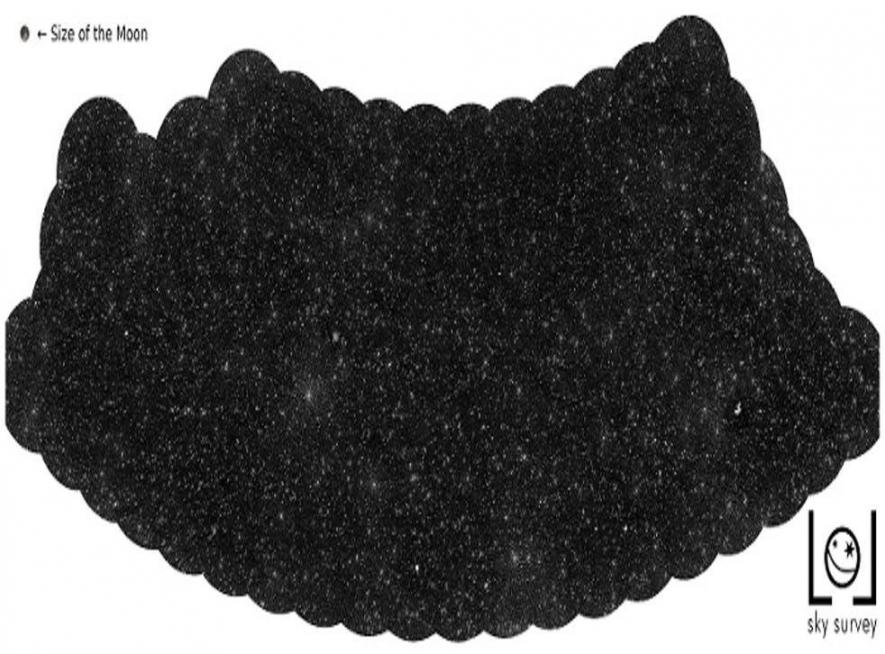Astronomers Map One Fourth of Northern Sky Having 25,000 Black Holes

Image is for representational use only. Image Source: Independent.co.uk.
In a stunning astronomical achievement, scientists have succeeded to map 25,000 black holes in one fourth of the entire northern sky. This has marked the most detailed mapping of the sky that has ever been produced.
The data, published in the journal Astronomy & Astrophysics and titled as “The LOFAR LBA Sky Survey”, describes how the scientists managed to capture the captivating celestial photograph.
For accomplishing the task, the scientists used low frequency radio waves and the map was produced with the help of the radio data from 52 stations across nine countries.
Commenting on the achievement, research leader Francesco de Gasperin remarked in a statement, “This is the result of many years of work on incredibly difficult data. We had to invent new methods to convert the radio signals into images of the sky.”
At the first glance for a common man, the map of the sky appears to be resembling what we normally observe in a night sky—the twinkling stars. But, in fact, the map goes much beyond that. The star like appearances are actually the super massive black holes.
The thousands of black holes, which are massive, are swallowing particles of gas and dust at the centre of each of the galaxy that they belong to. These are millions of light years away from the Earth. These massive black holes that are engulfing gas and dust particles send out radiations that even reach the Earth. These radiations emanating from those black holes are of varied wavelengths. Had these black holes not been engulfing the particles they would not have been detected. This is because the dormant black holes don’t emit radiation and they become almost invisible and undetectable by radio waves.
The black holes emit radiation at low radio frequency wavelengths. The LOFAR (Low Frequency Array) network, which consists of 20,000 radio antennas scattered in 52 locations of Europe detected the low frequency radio waves from the black holes.
LOFAR network has a marvellous capacity of producing high resolution images at frequencies as low as 100 megahertz. Apparently, it is the only such radio telescope network that is existing currently. LOFAR is also very sensitive in detecting radio waves. As the radio waves travel across space, its frequency and energy decreases. So, when such a wave reaches Earth from a source of millions of light years away, the diminished frequency and energy detection becomes a very tough job. The LOFAR network’s sensitivity is the key in successfully detecting the waves and producing the stunning image of the sky with thousands of black holes.
When the waves are captured by the radio antenna of the LOFAR network, researchers compile the radio wave data from each antenna of the network and estimate the location of the black holes.
Another major obstacle that LOFAR has to face is the ionosphere, the outermost layer of Earth’s atmosphere. The ionosphere is full of ions (charged particles) and electrons surrounding the atmosphere. This layer of electron and charged particles act like a smoke for the radio telescopes. This makes detection of the black holes extremely difficult. Very low frequency radio waves from the black holes could be reflected back into the space when they strike the ionosphere. The team of researchers developed super computer based algorithms to cut off the interference of the ionosphere.
This problem is not encountered by the space telescope, as they are roaming in the space, whereas the LOFAR antennas are situated at the surface of the Earth. But decades long efforts by the researchers finally solved the problems to achieve the mapping of the sky with black holes.
Get the latest reports & analysis with people's perspective on Protests, movements & deep analytical videos, discussions of the current affairs in your Telegram app. Subscribe to NewsClick's Telegram channel & get Real-Time updates on stories, as they get published on our website.














